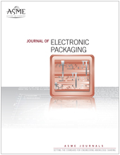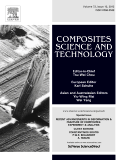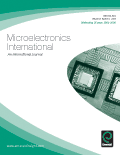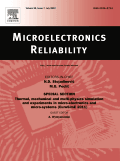
JOURNAL OF ELECTRONIC PACKAGING
Scope & Guideline
Connecting Knowledge in Electronics and Materials Science
Introduction
Aims and Scopes
- Thermal Management Solutions:
The journal emphasizes research related to innovative thermal management strategies, including liquid cooling, heat sink design, and thermal interface materials, aimed at enhancing the performance and reliability of electronic systems. - Reliability and Failure Analysis:
A core area of focus is the reliability of electronic components and systems. This encompasses studies on solder joint reliability, electromigration, and fatigue life under various operating conditions. - Advanced Materials and Manufacturing Techniques:
The exploration of new materials for electronic packaging, such as lead-free solders and nanocomposites, as well as advanced manufacturing techniques like additive manufacturing and aerosol jet printing, is a significant aspect of the journal. - Modeling and Simulation:
The journal publishes research that employs modeling and simulation techniques, including finite element analysis and machine learning, to predict thermal, mechanical, and electrical behaviors in electronic packaging. - Heterogeneous Integration and Miniaturization:
Research on heterogeneous integration methods and miniaturization techniques for electronic components, such as chiplets and 3D packaging, is highlighted to address the demand for smaller and more efficient electronic devices.
Trending and Emerging
- Machine Learning and Artificial Intelligence Applications:
There is a growing trend in the application of machine learning and AI for predictive modeling and optimization in electronic packaging. This includes fatigue life prediction and reliability assessments, indicating a merging of traditional engineering with data-driven approaches. - Sustainability and Eco-Friendly Materials:
Research focusing on sustainable materials and processes, such as lead-free solders and eco-friendly manufacturing methods, is gaining traction as the electronics industry moves towards greener practices. - Advanced Cooling Technologies:
Emerging cooling technologies, such as two-phase cooling and thermosyphon systems, are increasingly popular, reflecting the need for efficient thermal management solutions in high-density electronic applications. - Integration of IoT and Smart Electronics:
The integration of electronic packaging with IoT devices and smart technologies is on the rise, focusing on reliability and performance in connected systems, which is crucial for future advancements in consumer electronics. - 3D Packaging and Chiplet Design:
The trend towards 3D packaging and chiplet architectures is becoming more pronounced, driven by the demand for compact and high-performance electronic systems that support heterogeneous integration.
Declining or Waning
- Traditional Soldering Techniques:
Research focusing on conventional soldering methods has decreased, likely due to the industry’s shift towards lead-free and advanced soldering techniques that enhance reliability and performance. - Low-Temperature Applications:
There appears to be a waning interest in studies specifically targeting low-temperature applications, as more research is directed towards high-temperature stability and performance in electronics. - Basic Thermal Analysis Methods:
Fundamental thermal analysis methods are becoming less prominent, giving way to more sophisticated approaches that incorporate multi-physics modeling and advanced computational techniques. - Electromechanical Systems:
The focus on electromechanical systems within packaging has diminished, possibly due to a broader emphasis on integrated circuits and semiconductor devices that dominate the current landscape.
Similar Journals

Transactions on Electrical and Electronic Materials
Connecting Academia and Industry through Cutting-edge ResearchTransactions on Electrical and Electronic Materials, published by Springer, is a distinguished journal aimed at advancing the fields of electrical and electronic engineering, as well as electronic, optical, and magnetic materials. With an ISSN of 1229-7607 and an E-ISSN of 2092-7592, this journal is vital in disseminating impactful research and innovations, providing insights and significant findings that cater to both academia and industry. Holding a Q3 ranking in the categories of Electrical and Electronic Engineering and Electronic, Optical and Magnetic Materials, it serves as a reputable platform for sharing research that influences ongoing developments in these critical areas. The journal's converged years from 2011 to 2024 signify its commitment to providing a comprehensive review of technological advancements. Located in New York City, it appeals to a global audience of researchers, professionals, and students, enhancing their understanding of current trends and practices within the domain.

Batteries-Basel
Innovating Battery Science for a Sustainable TomorrowBatteries-Basel, published by MDPI, is a premier open-access journal since 2015 that aims to serve the growing community focused on the technological advancements and innovations in battery science and related fields. Operating from its base in Switzerland, this journal publishes high-quality research covering the fields of Electrical and Electronic Engineering, Electrochemistry, and Energy Engineering and Power Technology. With a commendable Q2 ranking in multiple categories for 2023, it consistently strives to present cutting-edge studies, reviews, and practical applications that drive progress in energy storage technologies. Researchers and professionals will find invaluable insights within its pages, contributing to both theoretical understanding and practical deployment of battery technologies. Open access provides broad dissemination of knowledge, ensuring that discoveries reach a global audience, and fostering collaborative efforts to address the challenges posed by modern energy demands.

Frontiers in Mechanical Engineering-Switzerland
Driving Breakthroughs in Engineering ScienceFrontiers in Mechanical Engineering-Switzerland, published by FRONTIERS MEDIA SA, is a pioneering open-access journal that has been fostering innovations in the field of mechanical engineering since its inception in 2015. Based in Switzerland, this journal provides a robust platform for disseminating cutting-edge research across multiple disciplines within mechanical engineering, including materials science, industrial and manufacturing engineering, and computer science applications. With impressive Scopus rankings, including Q2 statuses in key categories such as Industrial and Manufacturing Engineering and Mechanical Engineering, it stands out as a valuable resource for researchers and practitioners aiming to stay abreast of trends and breakthroughs in these fields. By embracing open-access principles, the journal ensures that high-quality research is readily available to a global audience, thereby promoting collaboration and knowledge sharing. As it continues to grow, Frontiers in Mechanical Engineering is poised to make significant contributions to both academic and professional communities, enhancing understanding and advancing practices in engineering disciplines.

COMPOSITES SCIENCE AND TECHNOLOGY
Innovating Solutions for Tomorrow's Engineering ChallengesComposites Science and Technology, a premier journal published by Elsevier Sci Ltd, serves as a vital resource in the fields of composite materials and engineering. With an impressive 2023 impact factor reflecting its influential contributions, this journal has established itself within the top tier of academic publishing, flaunting a Q1 ranking in both the Ceramics and Composites and Engineering (Miscellaneous) categories. Covering a diverse range of topics from the development of novel composite materials to their practical applications across various industries, it is recognized for its rigorous peer-review process and high-quality research outputs. As reflected in its Scopus rankings, Composites Science and Technology places in the 97th percentile among general engineering journals and the 94th percentile amongst ceramics and composites science literature. Researchers and professionals alike benefit from its comprehensive access to cutting-edge discoveries and advancements, making it an indispensable tool for driving innovation within this dynamic field.

MICROELECTRONICS INTERNATIONAL
Illuminating the path of microelectronics advancement.MICROELECTRONICS INTERNATIONAL is a distinguished peer-reviewed journal published by Emerald Group Publishing Ltd, focusing on the expansive domains of microelectronics, materials science, and physics. With its ISSN 1356-5362 and E-ISSN 1758-812X, the journal has been a critical platform for researchers since its inception in 1982. Although it currently holds a Q4 category ranking across multiple disciplines such as Atomic and Molecular Physics, Electronic Engineering, and Surfaces, Coatings and Films, it remains committed to advancing scholarship and fostering dialogue within these fields. The journal's scope encompasses innovative research and developments that contribute to the understanding and technological evolution of microelectronic materials and systems. While it doesn't offer open access, its content is accessible through various academic databases, enabling a broad audience of professionals and enthusiasts to engage with high-quality research findings. As microelectronics continues to play a pivotal role in shaping modern technology, MICROELECTRONICS INTERNATIONAL serves as an essential resource for advancing knowledge and inspiring future innovations.

MICROELECTRONICS RELIABILITY
Connecting Research and Reliability in MicroelectronicsMICROELECTRONICS RELIABILITY, published by PERGAMON-ELSEVIER SCIENCE LTD, is a pivotal journal that serves the advancing field of microelectronics and materials reliability. With its ISSN 0026-2714 and E-ISSN 1872-941X, this journal has been at the forefront of disseminating research since its inception in 1962 and is set to continue exploring cutting-edge topics through 2024. The journal holds a respectable presence across several categories, achieving a Q3 ranking in areas such as Atomic and Molecular Physics and Electrical and Electronic Engineering, highlighting its broad interdisciplinary appeal, while also ranking in the Q2 category for Safety, Risk, Reliability, and Quality, which speaks to its commitment to ensuring standards in technological advancements. Access to this journal is subscription-based, making it an essential resource for researchers, professionals, and students seeking reliable information and data regarding electronic material performance and reliability assessment. Located in Kidlington, Oxford, UK, MICROELECTRONICS RELIABILITY is dedicated to advancing the field and addressing the critical issues associated with the reliability of microelectronic devices, thereby supporting innovations that shape our technological future.

International Journal of Precision Engineering and Manufacturing
Exploring New Frontiers in Precision Engineering and ManufacturingInternational Journal of Precision Engineering and Manufacturing, published by the Korean Society of Precision Engineering, is a key academic platform dedicated to the advancement of research in the fields of precision engineering and manufacturing. With an ISSN of 2234-7593 and an E-ISSN of 2005-4602, this esteemed journal caters to a diverse readership, including researchers, industry professionals, and students, who are committed to exploring innovative solutions in Electrical and Electronic Engineering, Industrial and Manufacturing Engineering, and Mechanical Engineering. Operating from South Korea, the journal has attained a commendable Q2 ranking in several engineering categories as of 2023, reflecting its influence and relevance in the academic community. Though it is not an open access journal, the International Journal of Precision Engineering and Manufacturing provides vital insights and updates in precision technology, bridging the gap between theory and practice. Researchers are encouraged to contribute to this evolving field and engage with high-quality studies that drive progress and innovation.

IEEE Open Journal of Industry Applications
Advancing industry insights through open access research.IEEE Open Journal of Industry Applications is a premier open-access publication established in 2020 by the esteemed IEEE-INST ELECTRICAL ELECTRONICS ENGINEERS INC, dedicated to advancing the fields of Control and Systems Engineering, Electrical and Electronic Engineering, and Industrial and Manufacturing Engineering. With a strong commitment to disseminating high-quality research, the journal has rapidly garnered recognition, achieving a Q1 quartile ranking in multiple engineering categories, notably securing a rank of 21st out of 321 in Control and Systems Engineering and 26th out of 384 in Industrial and Manufacturing Engineering as of 2023. This journal not only facilitates immediate access to cutting-edge findings but also fosters an inclusive academic environment where researchers, professionals, and students can engage with and contribute to the evolving landscape of industry applications. By embracing open access, it ensures that pivotal research is freely available, thereby maximizing its impact on the scientific community. For potential contributors and readers, the journal's robust Scopus rankings—placing it in the top 7% of its fields—highlight its significance as a leading platform for innovative discussions and explorations in engineering.

MACROMOLECULAR RESEARCH
Catalyzing Progress in Polymer ScienceMACROMOLECULAR RESEARCH, published by the POLYMER SOC KOREA, is a premier journal dedicated to advancing the field of macromolecular science and polymer engineering. With its ISSN 1598-5032 and E-ISSN 2092-7673, this journal has emerged as a vital platform for researchers and professionals interested in the application and development of polymers across various domains. Based in South Korea and operating as an open-access resource since its inception in 2002, MACROMOLECULAR RESEARCH consistently ranks in the Q2 category across diverse fields such as Chemical Engineering, Materials Chemistry, and Organic Chemistry as per the latest 2023 metrics. Notably, it is recognized for its substantial contributions to polymery science, increasing its visibility and impact in global research. By providing a forum for original research articles, reviews, and innovative methodologies, this journal aims to foster collaboration and knowledge sharing among scientists, engineers, and students alike. Join a community that is at the forefront of polymer research by exploring the wealth of resources and cutting-edge studies featured in MACROMOLECULAR RESEARCH.

Korean Journal of Metals and Materials
Elevating Knowledge in Metals and Materials ScienceWelcome to the Korean Journal of Metals and Materials, a premier publication dedicated to advancing research in the interdisciplinary fields of metals and materials science. Published by the Korean Institute of Metals and Materials, this journal aims to foster the dissemination of innovative findings and significant developments across various domains, including electronic, optical, and magnetic materials, metals and alloys, as well as modeling, simulation, and surface coatings. With a commendable Q3 quartile ranking in several relevant categories as of 2023, it serves as a vital resource for researchers, professionals, and students interested in the latest scientific trends and technological applications. The journal has successfully converged from 2007 to 2024, showcasing a rich archive of knowledge. Engaging with this publication gives readers the opportunity to stay updated with critical advancements and enhances collaboration within the vibrant materials science community. Access is available through various platforms, ensuring that our content is widely accessible to all those striving for excellence in the field.